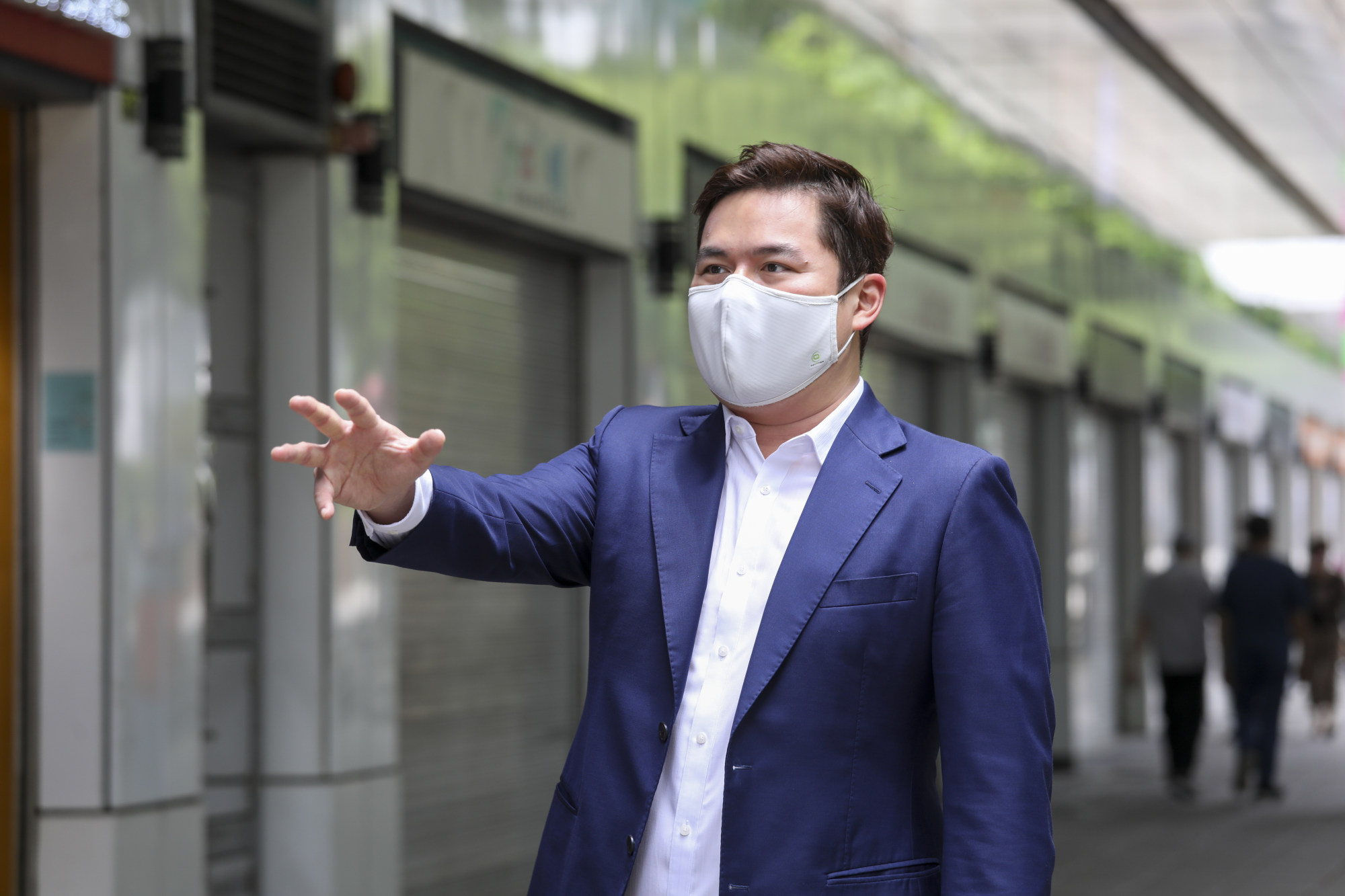
Can Hong Kong’s Park Lane shopping strip come back to life? Owners hope adding food, drinks will help
- Pandemic has hit fortunes of Tsim Sha Tsui shopping row, once a magnet for mainland Chinese visitors
- Green group raises concerns that emissions from cafes could affect old banyan trees in the area
Yue Hwa Chinese Products Emporium is among the shops still open along Hong Kong’s Park Lane Shoppers’ Boulevard, a once-thriving tourist draw in Tsim Sha Tsui struggling to come back to life.
“Because of the pandemic, everything is gone. The place is very quiet now,” said Andrew Yu Wai-kit, director of the department store that was among the first to open in the area in 1986.
A third of the 70 shops in the famous row along Nathan Road shut their doors for good during the Covid-19 pandemic as Hong Kong closed to visitors and what used to be a magnet for mainland Chinese visitors is now a shadow of its former self.

Yu’s company owns 19 shops along the strip and, as chairman of the boulevard’s group of owners, he has worked with owners to revive its fortunes.
For starters, they hope to attract more Hong Kong shoppers, instead of waiting for mainland visitors to return.
They have applied for planning approval to convert some units into cafes selling coffee, tea and pastries, among other goods.
But, because of the nearby Kowloon Park, the strip has been barred from having restaurants to prevent environmental pollution.
Apart from Yue Hwa, the other shops still open are mainly jewellers, including Chow Tai Fook Jewellery, and sportswear shops such as Nike and Fila.

Yu said diversification of the offerings could make a difference and attract more Hongkongers and families.
“Most people treat shopping as a lifestyle experience involving not just buying goods, but also eating and drinking. As this is not allowed on Park Lane, people just go to the malls nearby,” he added.
Park Lane, which stretches more than 300 metres along Nathan Road, occupies part of the site of the former Whitfield Barracks, which was bought for HK$218 million in 1983 in a joint venture by Miramar Hotel and Investment and New World Development.
They built the row of two-storey shops, designed to blend in with Kowloon Park, and sold the units to different owners.
In a newspaper advertisement from 1985, a year before it opened, the development was marketed as a landmark that combined “the elegance of Faubourg St. Honore, Paris, [and] the grandeur of Rodeo Drive, Beverly Hills”.

Shoppers could buy jewellery, clothes from fashion chains and children’s toys and enjoy the shade of old Chinese banyan trees in the area’s heyday.
It drew tourists and locals alike, with festive lights and decorations during the Christmas and Lunar New Year seasons.
The boulevard became a favourite of mainland Chinese who were allowed to visit Hong Kong as individuals, rather than in group tours, under a scheme to help revive the city’s economy after the Sars outbreak caused devastation in 2003.
But the crowds put off younger Hongkongers such as Edward Lui, 33, a hospital employee, who said he thought of Park Lane as a place full of tourists and shops selling gold, suitcases and electronic appliances.
“It is somewhere I always avoid when I am at Tsim Sha Tsui,” said Lui, who added that he preferred nearby shopping centres such as Harbour City and K11.
A total of 24 units along the strip were vacant last month, including seven undergoing renovation.
To revive its fortunes, Yu consulted the other 43 owners and set up an owners’ corporation last year and that led to the plan to have a better mix of shops, including those selling food and drinks.
“The market has been pushing the boulevard to change, to cater not only tourists but also locals,” he said.
“Having a tenant mix with light refreshments will attract lifestyle brands and lifestyle concept stores that hopefully attract more customers.”
Yu added that shops selling sportswear could also prove appealing, especially to users of the sports complex in Kowloon Park.
Hong Kong clothing chain G2000 was a tenant between 1994 and 2008. Founder Michael Tien Puk-sun said the outlet had to give way to jewellery shops after the landlord raised the rent to an “unreasonable” level.
“Everyone saw business opportunities for jewellery back then, and clothes stores just stood aside. I won’t go back,” said Tien, a lawmaker.

Simon Lee Siu-po, an honorary fellow of the Asia-Pacific Institute of Business at Chinese University, was pessimistic about Park Lane’s prospects of becoming more appealing as there were plenty of dining options nearby.
Lee added the strip’s fragmented ownership was also an obstacle.
“Everyone has different interests. They may not unite to work together, which makes it hard to succeed,” he said.
He added the owners could think of gimmicks to lure tenants, such as discounted rents to attract big-name pastry shops and contacting speciality shops, such as cafes which showcased the coffee roasting and brewing process.
But Lee said, however, he expected jewellery shops to dominate once the border reopened and tourists returned.
Environmental group the Conservancy Association raised concerns about the owners’ plans and highlighted the possible damage to old trees.
There are 17 Chinese banyan trees along the strip that are included in a government list of 459 “old and valuable trees”.
Despite measures proposed by the owners, including the installation of air purifiers in cafes, the environmental group feared that the leaves of the trees would suffer from emissions.
But Yu said the owners’ group hoped to protect the trees and had proposed limiting the gross floor area of cafes and would not allow businesses that emitted strong cooking fumes and odours.
“We hope to create a nice environment, not a noisy one,” he added.

